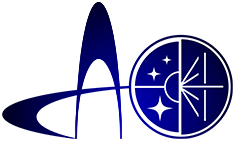АСТРОФИЗИЧЕСКИЙ БЮЛЛЕТЕНЬ, 2025, том 80, № 3, страницы 433–443
СТРУКТУРА МАГНИТНОГО ПОЛЯ ГЛАВНЫХ КОМПОНЕНТОВ ТЕСНЫХ ДВОЙНЫХ СИСТЕМ BD−19 5044L, HD 37017, HD 98088
© 2025
Ю. В. Глаголевский1*
1Специальная астрофизическая обсерватория Российской академии наук, Нижний Архыз, 369167 Россия
*E-mail: glagol@sao.ru
*E-mail: glagol@sao.ru
УДК 524.387-337
Поступила в редакцию 20 марта 2024 года; после доработки 2 марта 2025 года; принята к публикации 5 мая 2025 года
Изучены структуры магнитного поля главных компонентов в трех тесных двойных системах. По всем свойствам они не отличаются от одиночных магнитных звезд. Имеются признаки потери момента вращения двумя путями: 1) его передачей окружающим магнитную протозвезду облакам по силовым линиям и 2) через приливные взаимодействия с близким компонентом. В рамках гипотезы реликтового происхождения магнитных звезд рассмотрена возможная схема формирования тесных двойных систем с магнитным компаньоном.
Ключевые слова:
звезды: магнитные — звезды: отдельные: BD−19 044L, HD 37017, HD 98088
ФинансированиеСписок литературы
Данная работа финансировалась за счет средств бюджета обсерватории. Никаких дополнительных грантов на проведение или руководство данным конкретным исследованием получено не было.
Список литературы
1. H. A. Abt, Astrophys. J. Suppl. 11, 429 (1965). DOI:10.1086/190120
2. H. A. Abt andN. I. Morrell, Astrophys. J. Suppl. 99, 135 (1995). DOI:10.1086/192182
3. D. A. Bohlender, D. N. Brown, J. D. Landstreet, and I. B. Thompson, Astrophys. J. 323, 325 (1987). DOI:10.1086/165830
4. E. F. Borra and J. D. Landstreet, Astrophys. J. 228, 809 (1979). DOI:10.1086/156907
5. C. P. Folsom, K. Likuski, G. A. Wade, et al., Monthly Notices Royal Astron. Soc. 431 (2), 1513 (2013). DOI:10.1093/mnras/stt269
6. E. Gerth and Y. V. Glagolevskij, Bull. Spec. Astrophys. Obs. 56, 25 (2003).
7. Y. V. Glagolevskij, Astrophysics 55 (2), 169 (2012). DOI:10.1007/s10511-012-9225-x
8. Y. V. Glagolevskij, Astrophysical Bulletin 72 (3), 305 (2017). DOI:10.1134/S1990341317030191
9. Y. V. Glagolevskij, Astrophysical Bulletin 74 (1), 66 (2019). DOI:10.1134/S1990341319010073
10. Y. V. Glagolevskij, Astrophysical Bulletin 76 (1), 91 (2021). DOI:10.1134/S1990341321010089
11. Y. V. Glagolevskij, Astrophysics 67 (1), 35 (2024a). DOI:10.1007/s10511-024-09814-5
12. Y. V. Glagolevskij, Astrophysical Bulletin 79 (1), 137 (2024b). DOI:10.1134/S1990341324600091
13. Y. V. Glagolevskij and A. F. Nazarenko, Astrophysical Bulletin 71 (4), 453 (2016). DOI:10.1134/S1990341316040088
14. P. Hut, Astron. and Astrophys. 99, 126 (1981).
15. J. D. Landstreet, S. Bagnulo, V. Andretta, et al., Astron. and Astrophys. 470 (2), 685 (2007). DOI:10.1051/0004-6361:20077343
16. J. D. Landstreet, O. Kochukhov, E. Alecian, et al., Astron. and Astrophys. 601, id. A129 (2017). DOI:10.1051/0004-6361/201630233
17. D. L. Moss, Monthly Notices Royal Astron. Soc. 168, 61 (1974). DOI:10.1093/mnras/168.1.61
18. G.W. Preston, Publ. Astron. Soc. Pacific 83 (495), 571 (1971). DOI:10.1086/129174
19. N. R. Walborn, Astrophys. J. 191, L95 (1974). DOI:10.1086/181558
2. H. A. Abt andN. I. Morrell, Astrophys. J. Suppl. 99, 135 (1995). DOI:10.1086/192182
3. D. A. Bohlender, D. N. Brown, J. D. Landstreet, and I. B. Thompson, Astrophys. J. 323, 325 (1987). DOI:10.1086/165830
4. E. F. Borra and J. D. Landstreet, Astrophys. J. 228, 809 (1979). DOI:10.1086/156907
5. C. P. Folsom, K. Likuski, G. A. Wade, et al., Monthly Notices Royal Astron. Soc. 431 (2), 1513 (2013). DOI:10.1093/mnras/stt269
6. E. Gerth and Y. V. Glagolevskij, Bull. Spec. Astrophys. Obs. 56, 25 (2003).
7. Y. V. Glagolevskij, Astrophysics 55 (2), 169 (2012). DOI:10.1007/s10511-012-9225-x
8. Y. V. Glagolevskij, Astrophysical Bulletin 72 (3), 305 (2017). DOI:10.1134/S1990341317030191
9. Y. V. Glagolevskij, Astrophysical Bulletin 74 (1), 66 (2019). DOI:10.1134/S1990341319010073
10. Y. V. Glagolevskij, Astrophysical Bulletin 76 (1), 91 (2021). DOI:10.1134/S1990341321010089
11. Y. V. Glagolevskij, Astrophysics 67 (1), 35 (2024a). DOI:10.1007/s10511-024-09814-5
12. Y. V. Glagolevskij, Astrophysical Bulletin 79 (1), 137 (2024b). DOI:10.1134/S1990341324600091
13. Y. V. Glagolevskij and A. F. Nazarenko, Astrophysical Bulletin 71 (4), 453 (2016). DOI:10.1134/S1990341316040088
14. P. Hut, Astron. and Astrophys. 99, 126 (1981).
15. J. D. Landstreet, S. Bagnulo, V. Andretta, et al., Astron. and Astrophys. 470 (2), 685 (2007). DOI:10.1051/0004-6361:20077343
16. J. D. Landstreet, O. Kochukhov, E. Alecian, et al., Astron. and Astrophys. 601, id. A129 (2017). DOI:10.1051/0004-6361/201630233
17. D. L. Moss, Monthly Notices Royal Astron. Soc. 168, 61 (1974). DOI:10.1093/mnras/168.1.61
18. G.W. Preston, Publ. Astron. Soc. Pacific 83 (495), 571 (1971). DOI:10.1086/129174
19. N. R. Walborn, Astrophys. J. 191, L95 (1974). DOI:10.1086/181558
Structure of Magnetic Fields of Primary Components of Close Binary Systems BD−19 5044L, HD 37017, HD 98088
© 2025
Yu. V. Glagolevskij1*
1Special Astrophysical Observatory of the Russian Academy of Sciences, Nizhnii Arkhyz, 369167 Russia
*E-mail: glagol@sao.ru
*E-mail: glagol@sao.ru
The magnetic field structures of the primary components in three close binary systems have been studied. In all their properties, they do not differ from single magnetic stars. There are signs of the rotational momentumloss in two ways: 1) its transfer to the clouds surrounding the magnetic protostar along the field lines and 2) through tidal interactions with a close component. Within the hypothesis of the fossil origin of magnetic stars, a possible scheme for the formation of close binary systems with a magnetic companion has been considered.
Keywords:
stars: magnetic—stars: individual: BD−19 044L, HD 37017, HD 98088
К содержанию номера

